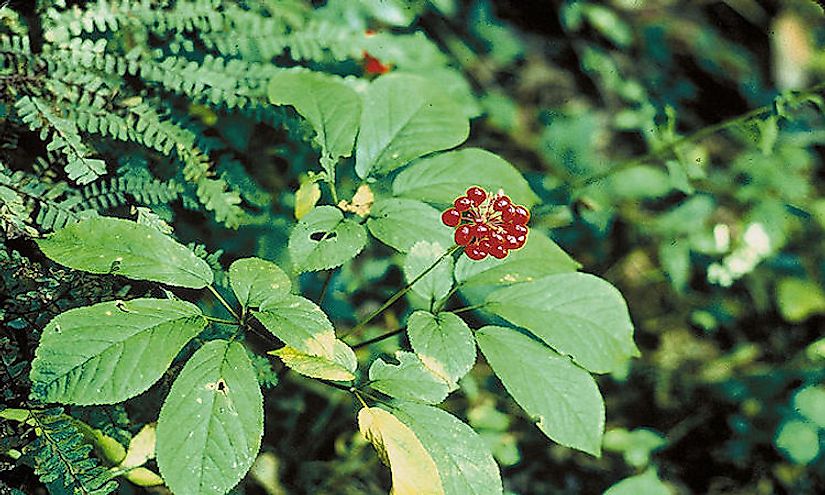Where Does Ginseng Grow?

Where Does Ginseng Grow?
Ginseng is a perennial herb with a large and slow growing root. Ginseng grows in North America and eastern Asia and is sold in over 35 countries with sales exceeding $2.1 billion. The plant was widely used by American Indians and it has been introduced in other regions in the world. The plant is widely renowned for its medicinal properties and has made its way to the endangered list of plant species due to its large-scale illegal harvesting.
Description
The appearance of Ginseng ranges from pale yellow to brown. The plant has a fleshy root, growing to between 2 and 3 inches in length and between 0.5-1 inches in thickness. The largest part of Ginseng is spindle-shaped and ringed, with a small projecting point. The plant’s stem is nearly a foot high and supports three leaves which are further divided into five leaflets. The stem has little yellow flowers and a single umbel. The plant’s fruit is made of a cluster of red berries.
Habitat And Habitat Range
Ginseng thrives in loose and rich soil and well drained slopes. 80% shade and a dense litter of leaves are also some important conditions for its growth. The shades of oak, maple, beech, basswood, hickory and tulip poplar trees have especially been proven to support Ginseng growth. Ginseng also thrives in the presence of other companion plants such as wild yam, Solomon’s seal, trillium and cohosh.
Ginseng grows in woodlands throughout central and eastern North America. The State of Wisconsin is the top producer in the country and the world. The American Ginseng also abounds in Canada, where its harvesting is highly restricted. Asian Ginseng is found in Manchuria, Japan, and Korea. The plant is also found in Siberia although the Siberian Ginseng does not have ginsenosides levels.
Uses Of Ginseng
The plant is highly revered for its medicinal properties, especially by the Chinese. Little quantities of the herb are used in herbal teas and energy drinks. Although not much research has been done in regard to its health benefits, a number of benefits have been attributed to the plant. These benefits include boosting energy levels, improving cognitive function, anti-inflammatory effects, lowering the risk for cancer, treating erectile dysfunction and as a stimulant treatment. The herb is particularly embraced for its medicinal abilities in China, which is the largest market for the world global trade of Ginseng.
Environmental Threats And Conservation Efforts
Due to its medicinal value, Ginseng has faced a growing demand across the world. Ginseng takes a relatively slow time to mature, mostly about 6 years. In a bid to satiate demand, illegal harvesting of the herb before maturity has been on the rise and this has threatened the plant’s sustainability. Wild Ginseng is the most demanded and this has led to its poaching in both the Asian and North American wild. Urban development and deforestation has led to the plant’s habitat loss.
Harvesting in Canada and in many states of the US is highly regulated and permitted only in certain periods. Ginseng roots exported from the US are legally required to have been harvested from 5 year or older plants and to have fulfilled the individual state’s requirements. More efforts have however been called for by environmentalists to effectively conserve the plant.







